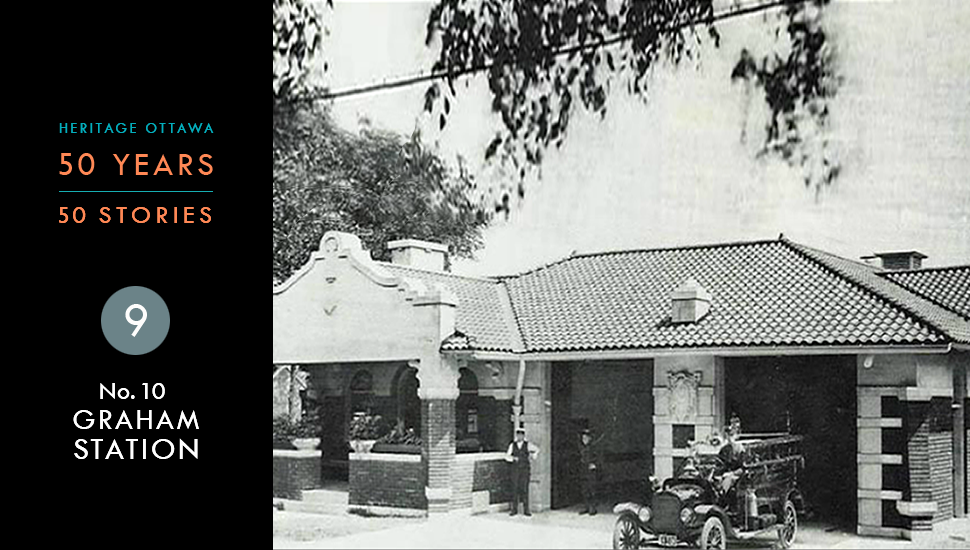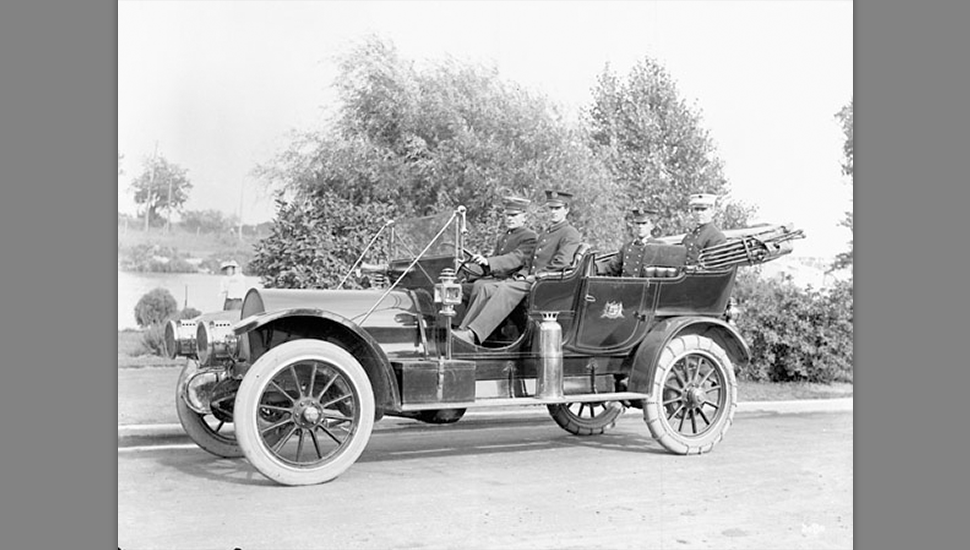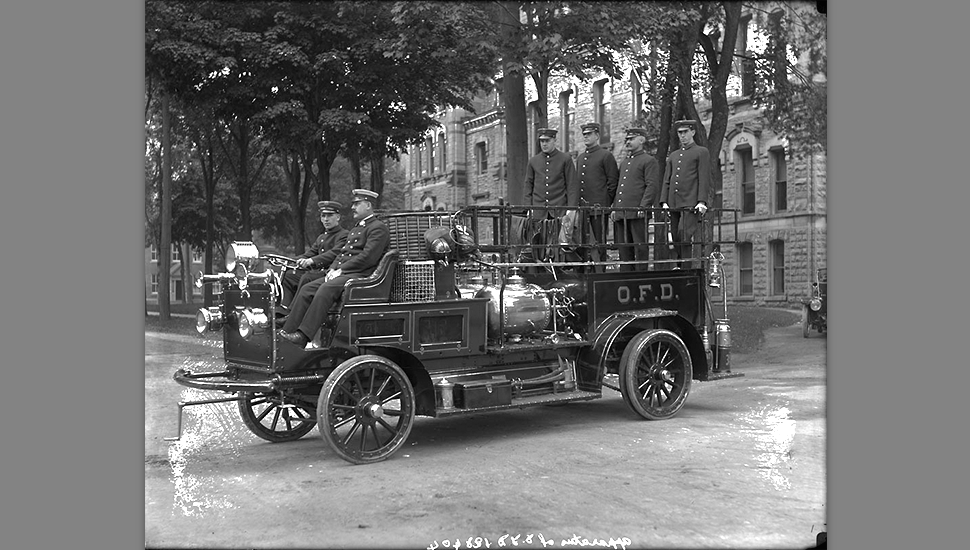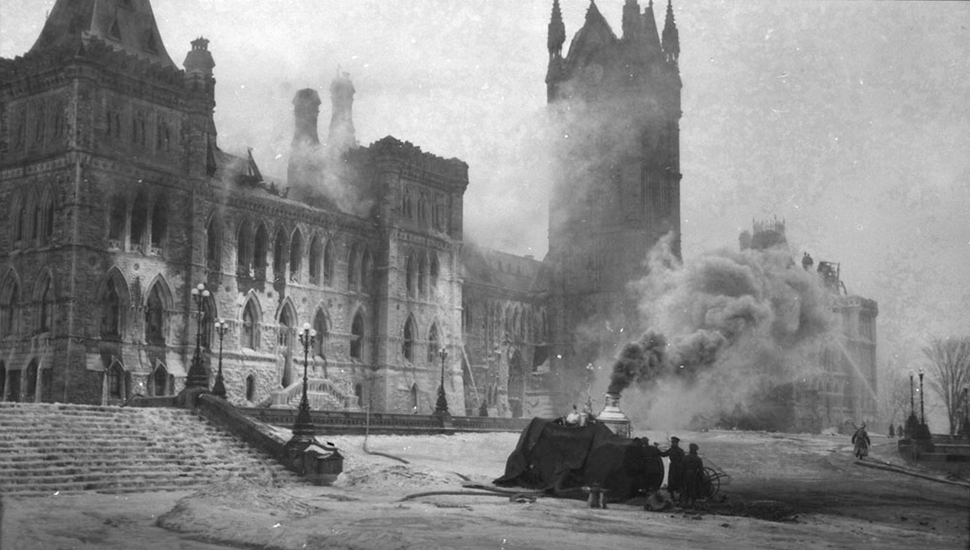9. No. 10 Graham Station
Constructed: 1920 - 1921
Architect: Werner Ernst Noffke
Location: 260 Sunnyside Avenue, Ottawa
Designed in 1920 by prominent Ottawa architect Werner Ernst Noffke, No. 10 Graham Station is an elaborate Spanish-Colonial style building named in honour of Ottawa Fire Chief John W. Graham, who served that post from 1910 to 1921.
Known for his progressive ideas, Graham transformed the Ottawa Fire Department into a modern firefighting service, implementing the Department's first motor-driven apparatus in 1911 while introducing new safety measures and advocating for improved fire prevention.
After the disastrous Centre Block fire of February 1916 at Parliament Hill, Graham pressed for construction of a new fire station to serve the rapidly growing area of Ottawa South. It was Graham who convinced city officials to hire Noffke to design a distinctive new station, in a style to suit the surrounding community.
Construction of the new station began in 1920. Built during a transition in the evolution of firefighting technology, No. 10 Graham Station accommodated both horse-drawn and motorized equipment. Stables for the horses were located on a lower level of the station, accessible from a side street. Instead of the traditional tower where canvas hoses were hung to dry, the station’s new rubber hoses were laid out in a special drying room in the basement.
A low-slung, bungalow-style structure built on a hill, the fire station fit into its residential surroundings. The protruding front porch with attractive curvilinear gable led to the office. Two traditional multi-paned truck doors are located to the right. Mounted between them is an elaborate cartouche identifying the station.
Tragically, Chief Graham lost his life in May, 1921 after fighting a factory fire.
The No.10 Graham Station opened in September, 1921 and would serve the community for over 50 years.
The first threat to the building emerged in 1964 when a consultant's report, prepared In response to Ottawa’s goal of streamlining its Fire Department, recommended that the City “re-locate Station 9 (Pretoria and O’Connor) a half mile southerly near Bank and Fifth, and close Station 10 (Sunnyside and Fairbairn).”
After a lengthy delay, Fire Station No. 12 was built at Fifth Avenue and O’Connor Street in 1974, resulting in the decommissioning of No. 10 Graham Station.
The danger of losing the unoccupied fire station appeared inevitable. Recognizing the importance of finding a new use, Heritage Ottawa’s second Newsletter of November, 1974 asked, “Surely this is a clear case where ‘recycling’ could be a model for us all?”
A campaign spearheaded by Mary-Anne Phillips (a founding member of Heritage Ottawa) and an endorsement from Mayor Lorry Greenberg eventually turned the tide.
With financial assistance from the City, the building opened its doors in 1978 as the “Ottawa South Community Centre”.
R.A.J. (Bob) Phillips, co-founder of Heritage Ottawa, recalled the battle to save No. 10 Graham Station in Ottawa Magazine in December 1981:
“For a while in the 1960’s, the city fire department seemed to be bulldozing more buildings than it was saving from the flames. Sunnyside firehall was on its list. A local resident started a one woman campaign to change that list and invited the support of Lorry Greenberg who went on to become one of Ottawa’s most heritage conscious mayors.
Fortunately the building had an excellent potential as a community centre. While the bulldozers were kept at bay, the local community association moved in with the hard work of proving feasibility and making it happen. Now one of Ottawa’s few surviving examples of interesting incendiary architecture has a new life as the focus of community activity. …”
The former No. 10 Graham Fire Station, known as the Old Fire Hall, was designated under Part IV of the Ontario Heritage Act in 1996.
The building was extensively renovated in 2009-2010 to designs by architect Anthony Leaning of the Ottawa firm CSV Architects. The award-winning renovation included a 300 square-meter extension to serve the needs of the Old Ottawa South community, which continues to use the building as its local Community Centre.





